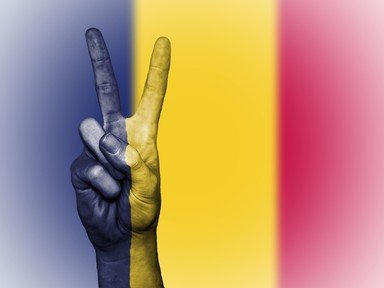Quiz Answer Key and Fun Facts
1. The country of Chad is named for which of the following?
2. Chad has participated at most of the Olympic Games since they first qualified in 1964 (the stadium in the picture is where it was held). They sent two athletes to Tokyo that year; in which discipline did they compete?
3. The national flag of Chad was unique when it was first unfurled, but is not anymore. Which country's national flag is it virtually identical to?
4. Pictured are members of the Toubou tribe who live up in the Tibesti Mountains. What sport are these nomadic people known for?
5. In the Lake Chad Basin area, there are two peoples, the Kanuri and the Kotoko, who use similar instruments, the Kanuri and the Waza, ceremonially. What type of instrument are the Kanuri and the Waza?
6. The majority of people in Chad live off of the grains grown in the country. Boule is the national food. What western food does it resemble?
7. Chad's Zakouma National Park is the home of many species, but, more importantly, is key in protecting and returning which animal to Central Africa?
8. Historically, much of Chad was ruled by the Kanem Empire. While the current capital of the country is N'Djamena, what was the name of the capital of the long-lived Kanem Empire?
9. Approximately how many ethnic groups are there in Chad?
10. Sadly, Chad is one of the poorest nations in the world. Despite this, it is rich in which of the following resources?
Source: Author
LeoDaVinci
This quiz was reviewed by FunTrivia editor
agony before going online.
Any errors found in FunTrivia content are routinely corrected through our feedback system.
